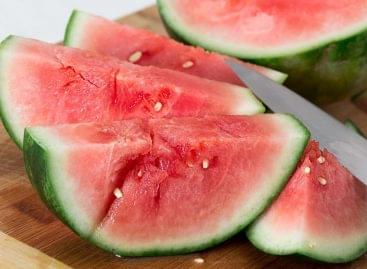The FAO global food price index has risen
The global index of food raw materials jumped to its highest value in the last 18 months, after the price of vegetable oils rose significantly, the Food and Agriculture Organization of the United Nations (FAO) reported.
 The FAO food price index, which shows the monthly price changes of important food raw materials in international trade, showed a 2% increase with its value of 127.4 points in October, and a 5.5% annual increase in prices. Even with all this, it is 20.5% below the peak value of March 2022.
The FAO food price index, which shows the monthly price changes of important food raw materials in international trade, showed a 2% increase with its value of 127.4 points in October, and a 5.5% annual increase in prices. Even with all this, it is 20.5% below the peak value of March 2022.
The vegetable oil price index shot up 7.3% in October, hitting a two-year high, as concerns over production boosted prices of palm, soybean, sunflower and canola oils.
Meanwhile, the cereal index rose 0.9%, driven by export prices for wheat and corn. Unfavorable weather among the main exporters of the northern hemisphere, the reintroduced unofficial minimum price in Russia, and growing contradictions in the Black Sea region had an impact on wheat prices. Corn also rose in price globally, partly due to strong Brazilian domestic demand and transportation difficulties caused by low river levels. In contrast, the rice sub-index fell 5.6% in October, reflecting a lower quote for the Indica type, thanks to expected intensifying competition among exporters after India lifted some export restrictions.
The sugar price index closed 2.6% higher in October due to concerns about the 2024-2025 production outlook generated by the prolonged drought in Brazil. The increase in the price of crude oil also contributed to the higher price of sugar, as sugarcane was used in a larger proportion to produce bioethanol. However, the weakening of the Brazilian real compared to the US dollar somewhat curbed the rise.
The price index of dairy products increased by 1.9% last month, which is 21.4% higher than a year earlier. The rise in price was mainly due to the international price increase of cheese and butter, while the price of milk powder fell.
Bucking the general trend, the meat price index has contracted by 0.3% since September, mainly due to lower pork prices, thanks to increased production in Western Europe amid weak domestic and international demand. The price of poultry meat also decreased, while that of mutton remained unchanged. However, the price of beef has increased somewhat amid a pick-up in global demand.
Updated 2024/25 forecast for cereals
According to the FAO’s new Cereal Stocks and Demands Flash Report, global cereal output is expected to fall by 0.4% year-on-year to 2,848 million tonnes in 2024, the second highest on record.
An increase in the global wheat harvest is expected after the production areas in Asia were increased and the weather was also favorable, offsetting the drop in the main European producers. The production of grain crops will decrease compared to the 2023 record, mainly due to the decrease in production caused by unfavorable weather in the case of corn. Meanwhile, the production of rice may reach a quantitative peak of 538.9 million tons.
The level of international grain trade may reach 485 million tons, which represents a 3.9% contraction compared to the 2023/24 season. Within this, the global trade of rice may expand, while that of wheat and cereals may decrease.
Related news
This year’s FAO scholarship recipients graduated in biotechnology and water management engineering
This diverse community is not only proof of the global…
Read more >FAO: Global production of major agricultural food commodities could reach new records
The latest assessment of global agricultural commodity markets by the…
Read more >Revitalizing rural areas with the help of young people
Young women and men in rural areas play an important…
Read more >Related news
Drought, technological competition and collaboration: the domestic melon season has begun
The 2025 Hungarian melon season starts amidst serious challenges: the…
Read more >Leadership change at Fornetti: Nándor Szabó is the new Managing Director
Nándor Szabó will take on the role of CEO of…
Read more >Change in Zwack management: Csaba Belovai is the new CEO of Zwack Unicum Plc.
According to the decision of the owners of Zwack Unicum…
Read more >






